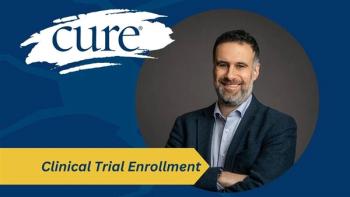
Controversy Surrounds PSA Use in Prostate Cancer: Expert Weighs In
Does PSA screening lead to an overtreatment of prostate cancer? Clayton S. Lau, M.D., discusses the topic.
Active surveillance may be the best option for some patients with early-stage prostate cancer, besting surgery, radiation therapy or systemic treatment, says Clayton S. Lau. However, it is important that patients are educated on the approach.
“Today, prostate cancer is one of the most common cancers diagnosed,” says Lau. “Actually, it’s the most common solid malignancy in men. One in six men actually get prostate cancer. I want to talk about just educating people on knowing about the disease itself, and learning about the evaluation and the treatment of it.”
What are some of the highlights and controversies around prostate cancer screening?
In an interview with CURE, Clayton S. Lau, M.D., director, Urologic Oncology, director, Robotic Surgery, Prostate Cancer Surgery, interim chair of Urology, City of Hope, highlighted the importance of active surveillance, the evolution of surgical techniques and radiation therapy, and the steps oncologists should take once early-stage prostate cancer progresses.There has been quite a bit of controversy about prostate cancer, especially with screening. Therefore, I wanted to go over the recent studies that have been published and the new guidelines for screening.
The controversy surrounds prostate-specific antigen (PSA). PSA was a biomarker that was created in the early 90s, and it helped detect early-stage prostate cancer.
How do you know whether a patient should receive treatment or undergo active surveillance?
The problem with that is that we saw overtreatment of prostate cancer, especially in low-grade, low-volume or indolent disease. It caused a lot of quality of life issues. Many men who were treated for prostate cancer were probably treated unnecessarily. With that, even though we did see a decrease in cancer-related deaths, we saw an increase in costs, and an increase in patients who have side effects from treatment. Now, we are trying to educate the public because we are finding that many patients — even with low, low-grade cancer — can often just be surveyed. Many patients don’t require active treatment.It is a complex decision, but it really involves decision making between the patient, the family, and the physician. Initially, it starts with the evaluation. The first thing is to figure out which people need to be evaluated, how they interpret the results, and go from there. The good thing is that we have guidelines set up by the NCCN and others that provide an algorithm for patients to decide on how to get treated or evaluated.
How often does a patient undergoing active surveillance experience a situation where they then have to undergo active treatment? What are the signs?
Beforehand, medicines were always very paternalistic. If you had a problem X, you go see the doctor, the doctor [gives you] one specific treatment. Now, the patient should be empowered and educated about what their options are. The physician’s role is to help them interpret the algorithms and help them decide. Unfortunately, with surveillance studies, we only have probably seven- or 10-year data. Depending on where the study is from — Canada, Scandinavia or the United States — we find that at least at the five-year mark, we probably see about 50 percent to 60 percent of patients drop out of surveillance. If you really look at eight or 10 years, it could be up to 70 percent or 80 percent of people who drop out of surveillance. At that point, usually patients aren’t symptomatic. Most of the time, they are going through surveillance, which entails PSAs, biopsies, and MRIs.
Once a patient starts receiving treatment, what therapies are they eligible for?
However, the trigger to really drop out of surveillance is when there is an increase in PSA levels or, on a repeat biopsy, they are finding more aggressive cancer. Or, an MRI might show a disease that is growing or something where there’s a more aggressive disease.There are a lot of different treatments. There’s radiation therapy, which is commonly done. That could be done usually through about six to eight weeks of treatment. It’s actually pretty quick and usually takes five to 10 minutes a day.
Another option is surgery. It is usually done robotically so it’s invasive, and a quicker recovery. More patients are going back to work within three to four weeks. The quality of life outcomes are much better now. Surgery has really come a long way in terms of the recovery time. More patients are recovering, in terms of their continence and their potency; they’re happier.
Where do you see the field of prostate cancer going in the next 10 or 15 years?
Additionally, there are other therapies such as cryoablation, known as freezing the prostate. Most recently, the FDA approved high-intensive frequency ultrasound. Most insurance companies don’t pay for it, but there is a big movement now for some people to pursue it. There is certainly a lot of controversy, because there’s not a ton of long-term follow-up, though.Biomarkers and imaging are important. Basically, the biggest thing we want to do is to discern which cancers are more significant and which ones are more indolent. There are so many treatments that are out there, and there are a lot of good doctors performing good care for the patients. However, we want to figure out who are the patients who really need treatment.





